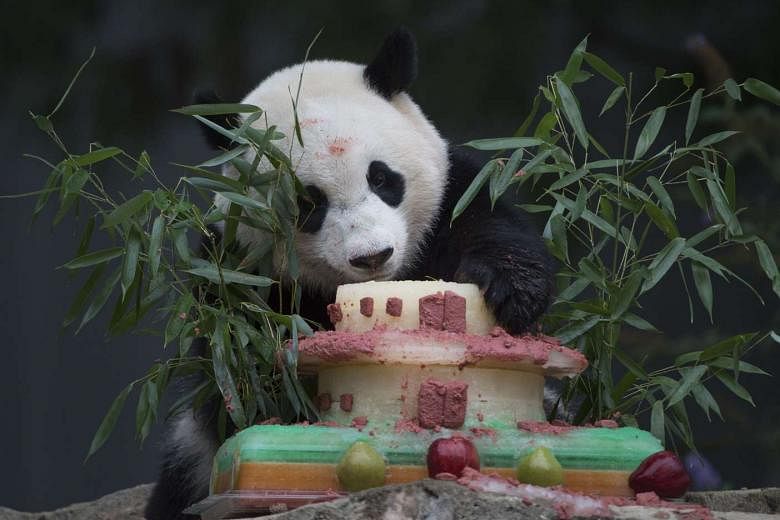When United States First Lady Michelle Obama and her China counterpart Peng Liyuan recently unveiled the name of the new baby panda - Bei Bei - at the Smithsonian National Zoo in Washington DC, it showed once again how these fuzzy creatures can be an effective rallying point for the two nations.
"This was just one of the many highlights of the visit designed to enhance friendship between the two peoples," said Chinese Ambassador to the United States Cui Tiankai, referring to the zoo visit.
When Bei Bei's two-year-old sister Bao Bao was born in 2013, both Madam Peng and Mrs Obama sent video remarks for the cub's 100-day celebration party. At the time, Ambassador Cui wrote an opinion piece in the Washington Post and called the panda cub a "clear envoy of China-US friendship".
Experts have noted that "panda diplomacy" is reaching its third phase where panda loans are associated with nations supplying China with resources and technology.
A study published in 2013 and led by Dr Kathleen Buckingham, who was at Oxford University, states that the first phase of panda diplomacy was during the Mao Zedong era of the 60s and 70s when China gifted pandas in order to build strategic friendships.
In phase two, after Deng Xiaoping's rise, the gifts took the form of loans, following a more capitalist lease model. Short-term loans were later replaced with long-term loans with the fees going to conservation. The Smithsonian National Zoo pays US$500,000 (S$704,640) annually for female adult panda Mei Xiang and her mate Tian Tian.
Panda diplomacy between the US and China can be traced back to February 1972. During President Richard Nixon's trip to China, First Lady Patricia Nixon mentioned her fondness for giant pandas to Premier Zhou Enlai.
In April 1972, the Nixons welcomed Ling Ling and Hsing Hsing to the Smithsonian National Zoo. The pandas instantly became the symbol of US-China friendship and cross-cultural collaboration.
In December 2001, Mei Xiang and Tian Tian arrived at the zoo, but this time they are on loan. The agreement states that they will remain at the zoo until the end of this year. Experts suggest that after pandas were included in the endangered species list in 1984, it was hard for China to be seen as giving the animals away for good relations.
Dr Buckingham and her team drew a link between panda loans and major trade agreements.
For example, Edinburgh Zoo received its pandas in 2011 and shortly after, trade deals were inked for salmon, Land Rover vehicles and renewable energy, while panda loans in Canada, France and Australia coincided with trade deals for uranium, said the researchers.
But if pandas are given to partners as a show of goodwill, they can as easily be taken away when things go south.
The offspring of Tian Tian and Mei Xiang was born in 2005, but the cub Tai Shan was returned to China in 2010 after his departure was delayed twice.
Reports at the time could not help but point out that China-US relations were not the rosiest, with Beijing upset with Washington over a weapons package for Taiwan, disputes over internet freedom and President Barack Obama's intention to meet the Dalai Lama, whom he did meet in the same month that Tai Shan left Washington.
Whether Washington gets to continue to keep Mei Xiang and Tian Tian may come down to more than just the expiry date of the loan.
Rather, it will depend on the state of US-China relations, which will be watched closely by panda fans and political pundits alike.


